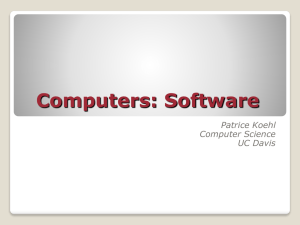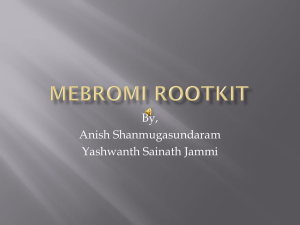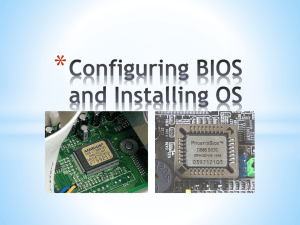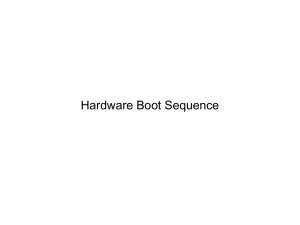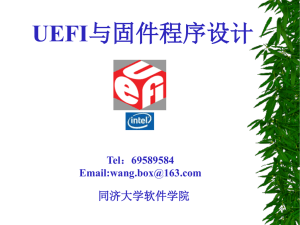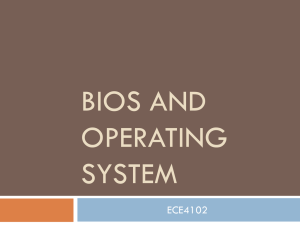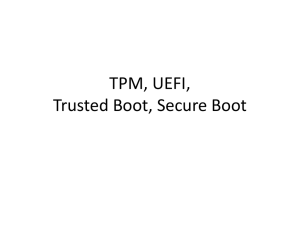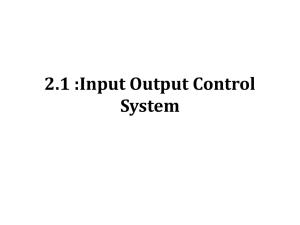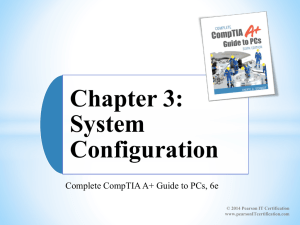BIOS
advertisement
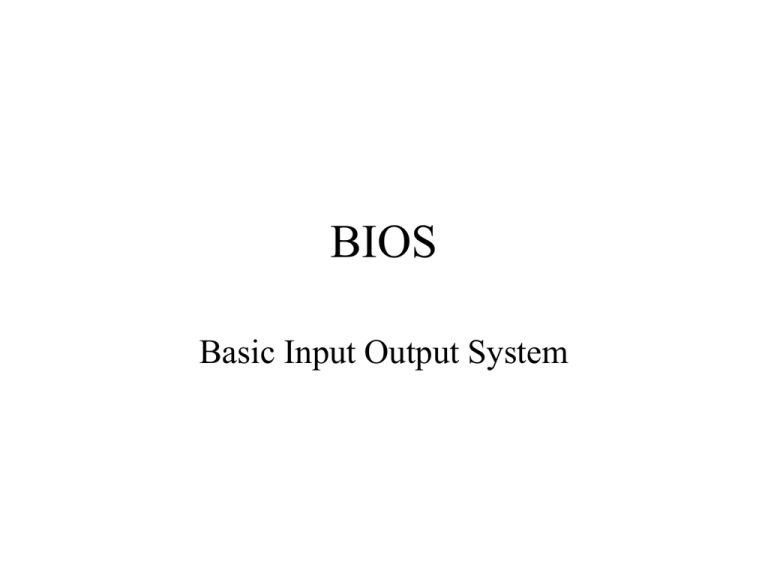
BIOS Basic Input Output System How does a computer get started? WAKE UP! Important things to remember • Computers only run programs • If there is no program, there is nothing to do • There is an “in the beginning” problem – How does the computer get the first program in it’s memory • When we turn on the computer where does it get the first program – From the boot partition of the hard drive … NO So WHERE? • • • • • From the ROM Read-Only-Memory Contains the bootstrap program It is where everything starts The first instruction of the bootstrap program is where execution always starts So what does it do? • Checks basic systems like keyboard, video and main memory (RAM memory) • Reads some of the ROM-stored data to determine configuration • Does a basic system check • Goes to the proper boot device indicated by the ROM configuration data and tries to load the bootloader for the appropriate OS BIOS in ROM non-volatile Bootstrap Program BIOS Data On a separate chip on MB. Always there. volatile Memory you install BIOS utilities video, hard drive i/o etc RAM Bootstrap Program BIOS Data BIOS utilities video, hard drive i/o etc RAM 1. Start running bootstrap 2. Read BIOS data to determine machine configuration 3. Read bootloader info from the hard drive 4. Boot OS from drive Hard Drive Bootstrap Program BIOS Data BIOS utilities video, hard drive i/o etc RAM 1. Start running bootstrap 2. Read BIOS data to determine machine configuration 3. Read bootloader info from the hard drive 4. Boot OS from drive Hard Drive Bootstrap Program BIOS Data BIOS utilities video, hard drive i/o etc RAM 1. Start running bootstrap 2. Read BIOS data to determine machine configuration 3. Read bootloader info from the hard drive 4. Boot OS from drive Hard Drive Bootstrap Program BIOS Data BIOS utilities video, hard drive i/o etc RAM 1. Start Running Boostrap 2. Read BIOS data to determine machine configuration 3. Read bootloader info from the hard drive 4. Boot OS from drive Hard Drive BIOS data • You can change this data at boot time • Usually press DEL when prompted, before it tries to boot from the drive • A program will allow you to alter basic information about machine configuration • Much of it is automated • Some you either want to override or it can not be determined automatically Passwording your BIOS • DON’T • You might want to do that in a professional setting to protect malicious users from booting from floppy, etc. • Can be reset on the motherboard. BIOS data • Hard drives, floppies, memory – Usually automatic • What drive to boot and the order to examine • System date/time • Overclocking specs • Be careful, but you can always go back to default (initial) setups • Remember to save changes when finished Other BIOS procedures • Some I/O functions complex. • Bootstrap program needs to do things like read the hard drive. • Routines are embedded in BIOS to help have basic functionality for I/O no matter what OS you boot. • Most OSs use there own functions once booting is done. Summary • BIOS has 3 main parts – Bootstrap – Configuration data – I/O routines • Main concern for you is updating configuration data
